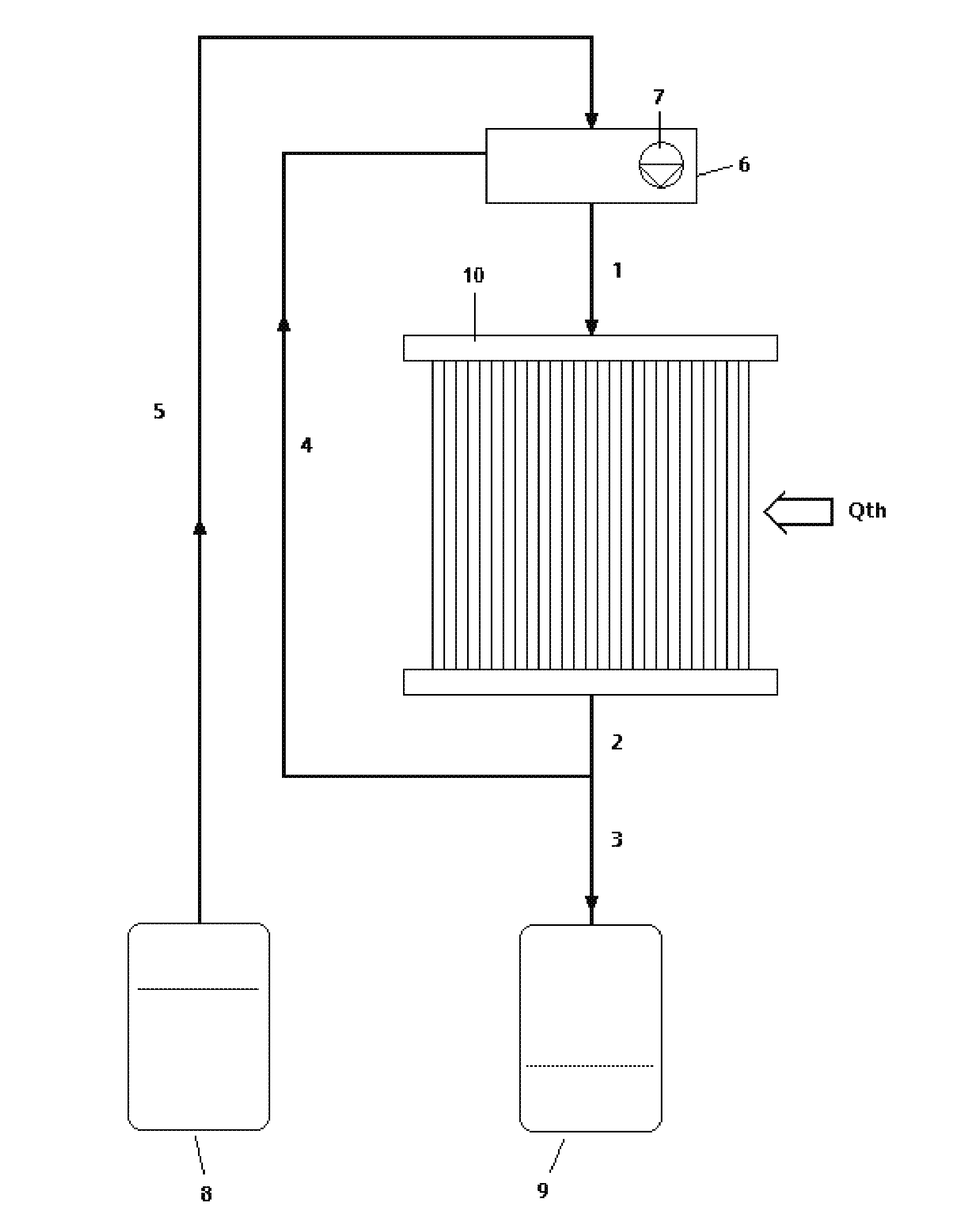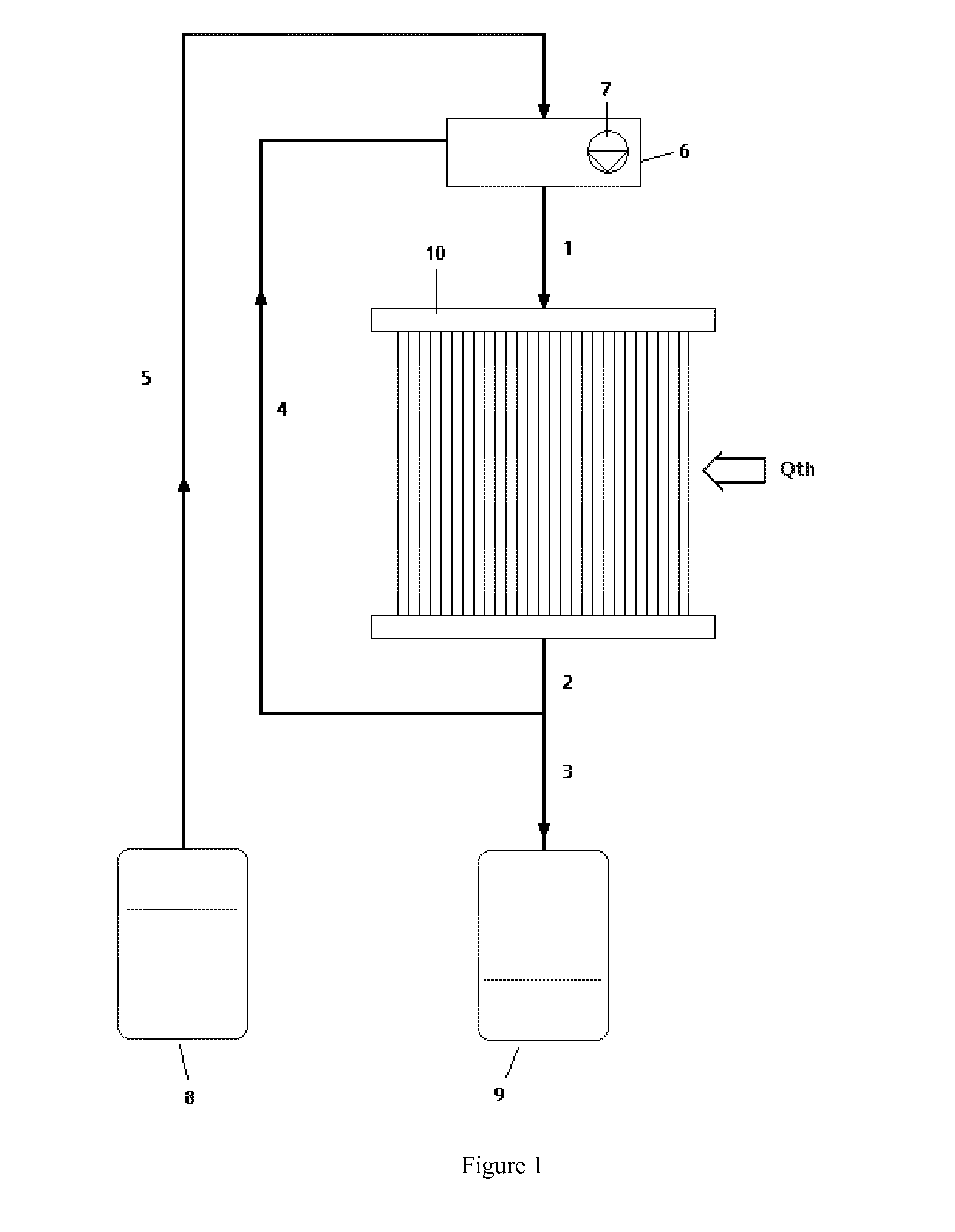Molten salt solar receiver and procedure to reduce the temperature gradient in said receiver
a technology of solar receiver and molten salt, which is applied in the field of high concentration solar thermoelectricity, can solve the problems of short operating period, molten salt receiver sections can present various difficulties, and the effect of short operating period
- Summary
- Abstract
- Description
- Claims
- Application Information
AI Technical Summary
Benefits of technology
Problems solved by technology
Method used
Image
Examples
Embodiment Construction
[0018]This invention proposes the design of a central tower receiver using molten salts with a defined configuration, which facilitates its functioning and control during the operation of the thermoelectric solar plant.
[0019]The main advantage of the design which is the object of this invention is that its implementation allows the useful life of the receiver to be increased and a decrease in the differences in temperature between the feed entrance and exit in the pipes which the receiver is composed of. As a consequence, there would be a reduction in the thermal tensions experienced by the material which can result in structural damage, such as fractures and cracks, mainly in the welded areas.
[0020]To achieve this, a system is proposed involving recirculation of a percentage of the exit flow of the receiver (mixture of hot molten salts) upon their entrance. This flow percentage must result in the lowest possible load loss, generating at the same time admissible thermal losses for a...
PUM
 Login to View More
Login to View More Abstract
Description
Claims
Application Information
 Login to View More
Login to View More - R&D
- Intellectual Property
- Life Sciences
- Materials
- Tech Scout
- Unparalleled Data Quality
- Higher Quality Content
- 60% Fewer Hallucinations
Browse by: Latest US Patents, China's latest patents, Technical Efficacy Thesaurus, Application Domain, Technology Topic, Popular Technical Reports.
© 2025 PatSnap. All rights reserved.Legal|Privacy policy|Modern Slavery Act Transparency Statement|Sitemap|About US| Contact US: help@patsnap.com



